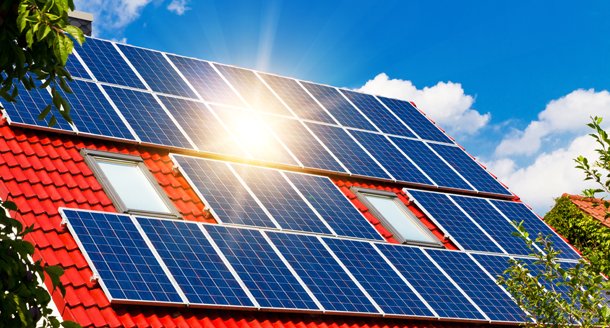As electricity costs soar and energy shortages persist, a growing number of Pakistanis are turning to solar energy as a viable solution. With the potential to generate 40 GW of solar power, as reported by the World Bank, the Pakistani government is rolling out favorable policies and incentives to spur solar energy adoption across the nation.
Let’s delve into the three primary types of solar panels: monocrystalline, polycrystalline, and thin film.
Types of Solar Panels
Monocrystalline Solar Panels
Renowned for their efficiency, monocrystalline solar panels boast an impressive efficiency rate of up to 20%. Crafted from a single pure silicon crystal, these panels sport a sleek black appearance. Ideal for both residential and commercial applications where space is at a premium and top-notch efficiency is paramount, monocrystalline panels, while pricier, deliver optimal performance.
Polycrystalline Solar Panels
Compared to their monocrystalline counterparts, polycrystalline solar panels offer slightly lower efficiency rates ranging from 13% to 16%. Made from melted raw silicon cast into molds, these panels feature a distinctive bluish hue. Popular for residential and commercial installations alike, polycrystalline panels strike a balance between affordability and efficiency.
Thin-Film Solar Panels
While less efficient than monocrystalline and polycrystalline panels, thin-film solar panels shine in terms of affordability and portability. With efficiency rates ranging from 7% to 14%, these panels are fabricated by depositing photovoltaic material onto substrates, rendering them lightweight and flexible. Perfect for small-scale applications like camping or remote power generation, thin-film panels offer cost-effective versatility.
Comparative Analysis of Solar Panel Types
- Monocrystalline: Highest efficiency (up to 20%), premium pricing, sleek black aesthetics
- Polycrystalline: Moderate efficiency (13-16%), cost-effective, distinctive bluish hue
- Thin-film: Lowest efficiency (7-14%), budget-friendly, portable and flexible
Selecting the Ideal Solar Panel
Your choice of solar panel hinges on factors such as energy requirements, budget considerations, and personal preferences. For superior efficiency and space-saving benefits, monocrystalline panels are unrivaled. If affordability and moderate efficiency are paramount, polycrystalline panels offer a compelling option. Conversely, thin-film panels cater to those seeking a portable and budget-friendly solution for smaller-scale applications.
Bear in mind that your selection will impact both electricity generation and installation costs. Consult with solar panel experts to determine the optimal solution tailored to your specific needs.
Maintenance and Care
Regular upkeep is essential to ensure peak performance and longevity of solar panels. Employ a soft brush, water, and mild soap solution to clean panels and rid them of dirt and debris. Steer clear of harsh chemicals and abrasive materials to prevent damage. Periodic inspections are crucial to identify and address issues promptly, safeguarding your investment and maximizing efficiency.
Embrace preventive measures such as tree trimming to optimize sunlight exposure and steer clear of shading. Avoid walking on panels to avert scratches and damage. Schedule routine professional maintenance checks to detect potential issues early on and prolong the lifespan of your solar panels.























